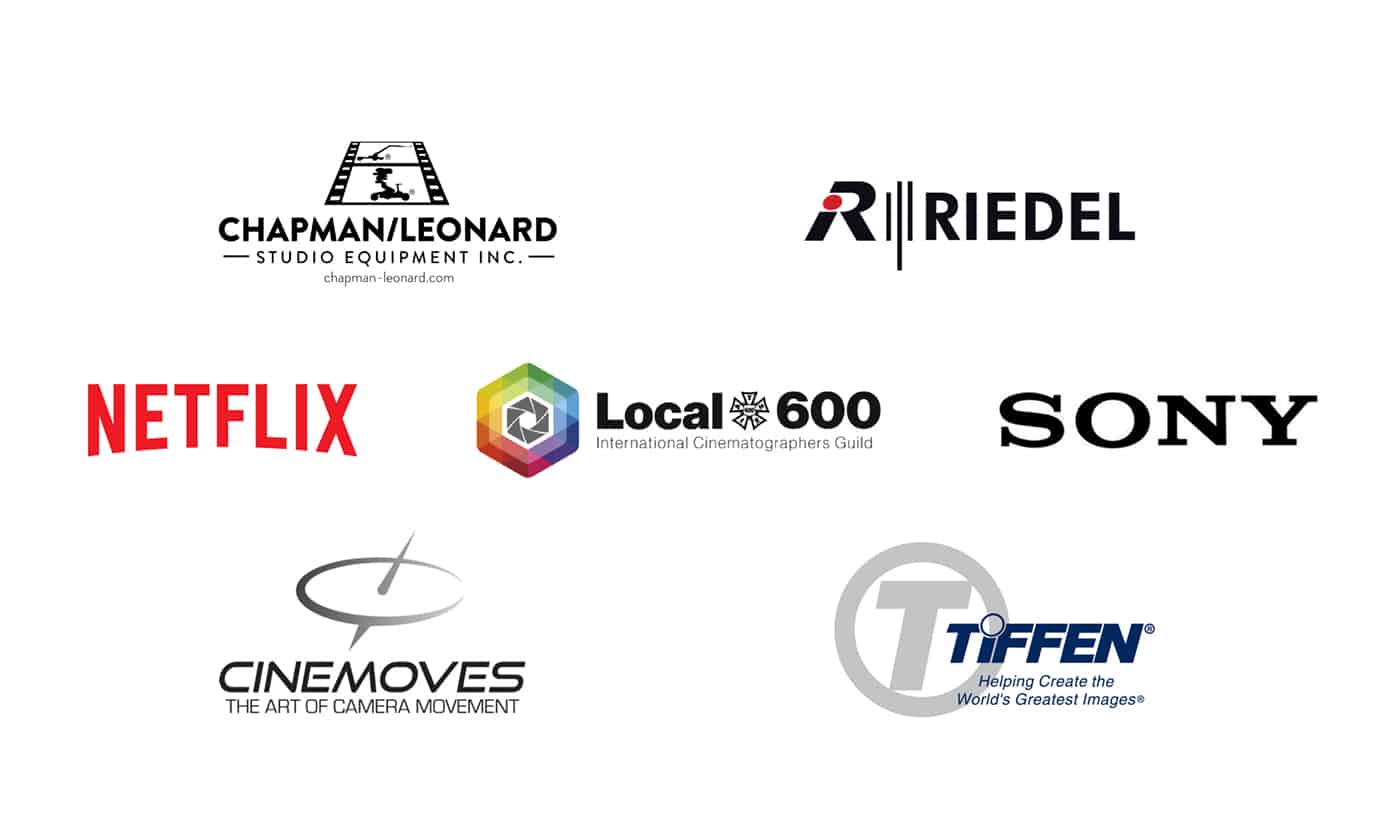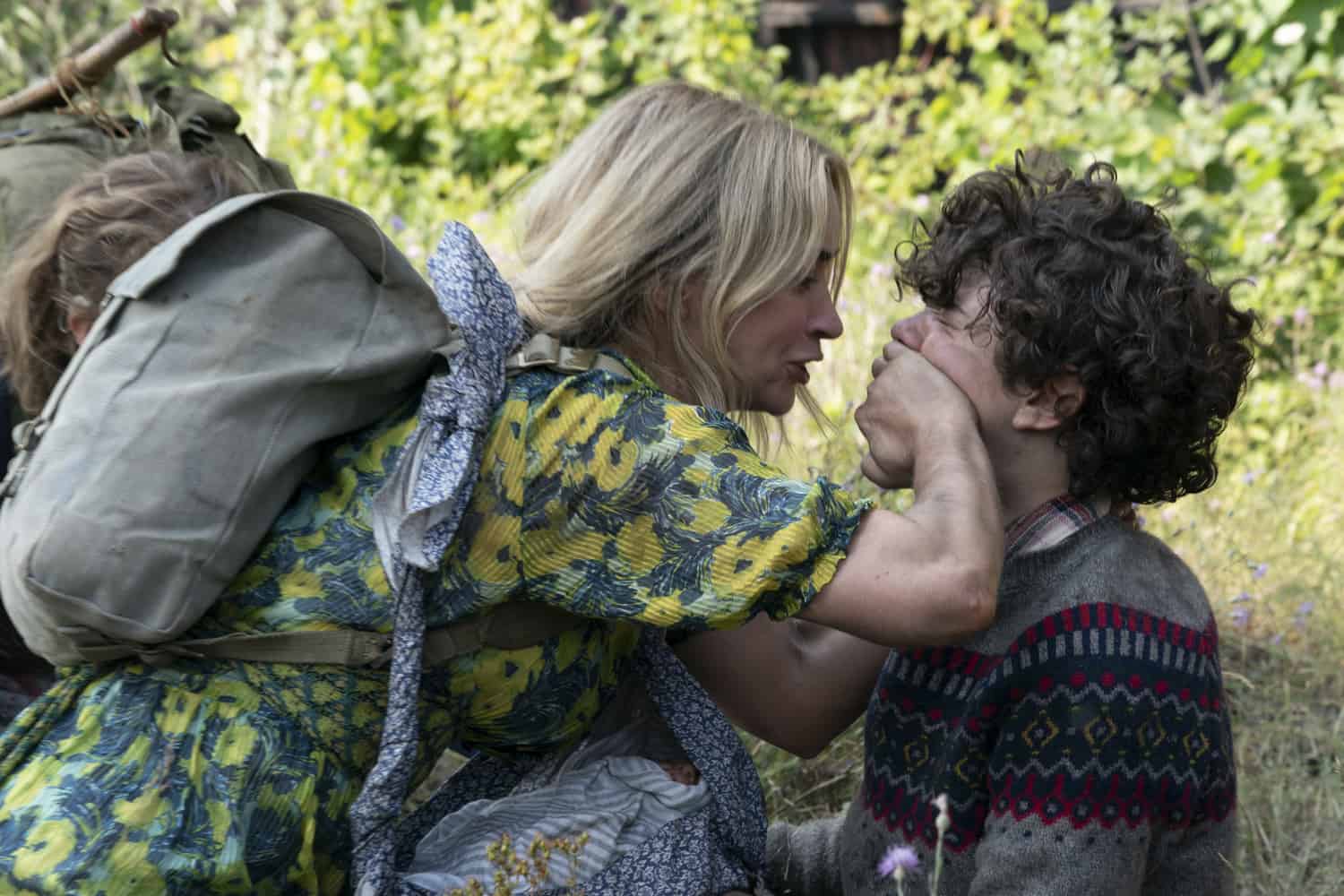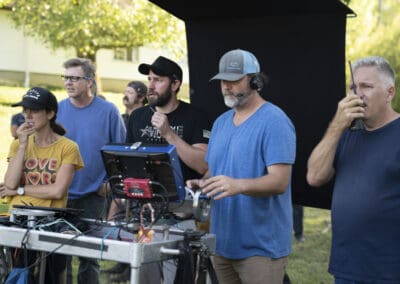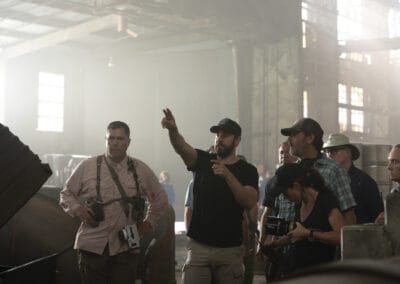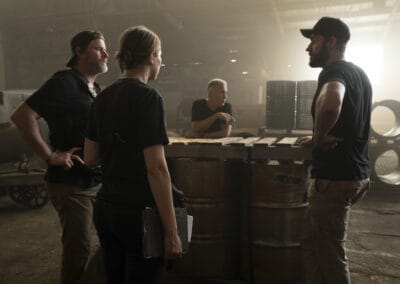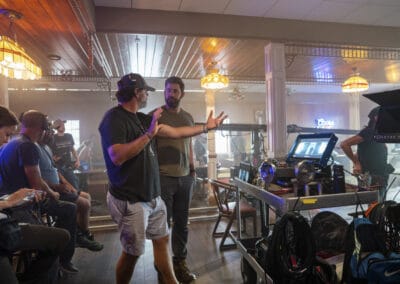A Quiet Place Part II:
A Symphony in Silence
By Matthew Moriarty, SOC
A Quiet Place Part II, the follow-up to the 2018 smash hit, picks up immediately in the aftermath of the previous film as the Abbott family searches for a new home in a post-apocalyptic world stalked by ferocious alien creatures that hunt based on sound.
The sequel, written and directed once again by John Krasinski, was met with critical acclaim when it released in early summer of last year.
Matthew Moriarty—fresh off his nomination for Camera Operator of the Year—took time to write about lessons learned while working on this picture.
From the value of assembling a strong team of talented artists and technicians to the importance of adhering to a decisive visual philosophy, Moriarty shares his insights into what made the film the success it was, and along the way provides a few glimpses at what went into making some of the film’s most dynamic scenes.
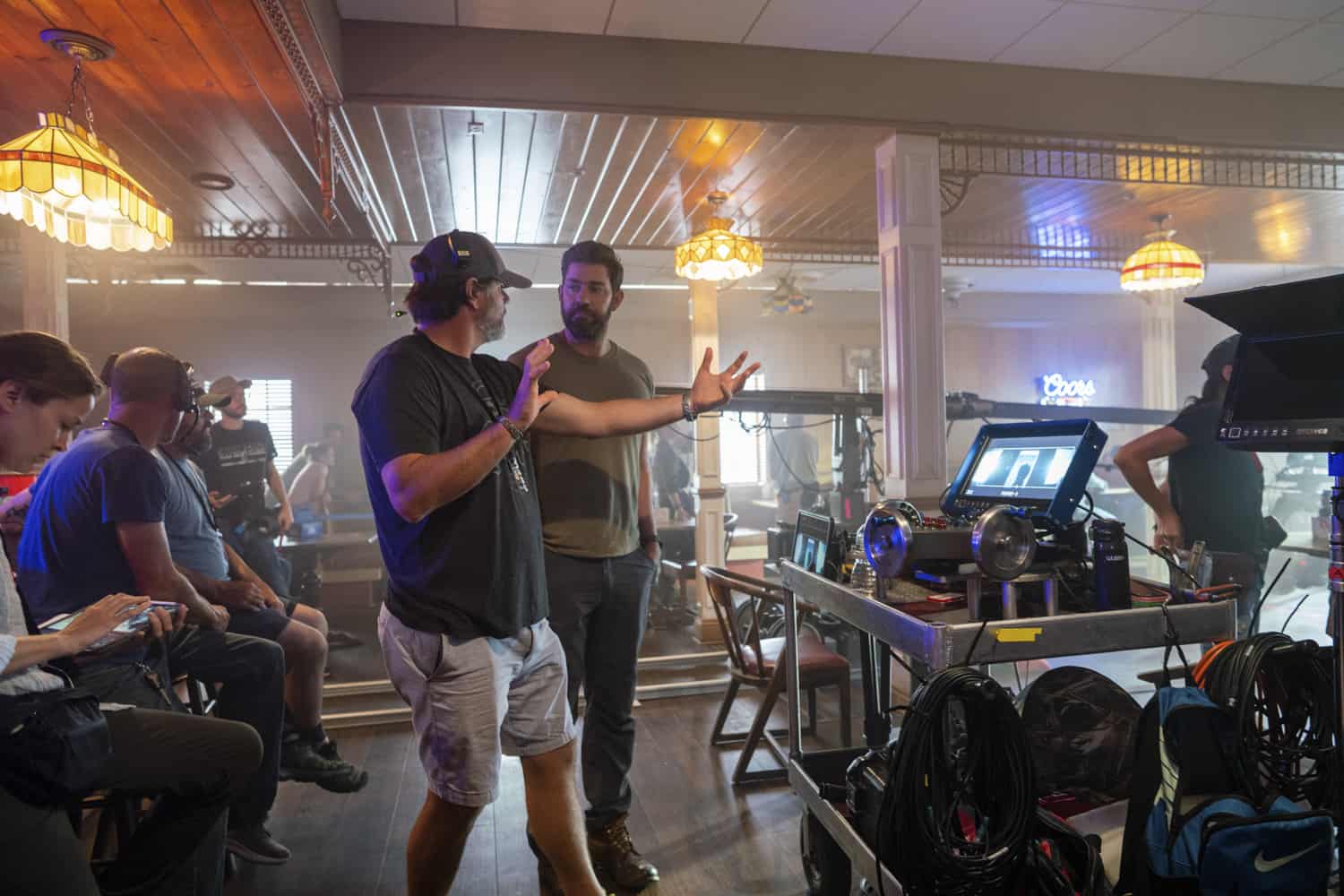
Matthew Moriarty, SOC, with director John Krasinski.
When I think of the concept of the Master Class, I think of a group of very advanced students assembled for one very specific purpose: to be taught exactly how much more there is to know. A Quiet Place Part II was exactly that for me. Dozens of veteran pros, assembled for the purpose of executing at a high degree of difficulty, and every day learning something new—about filmmaking, about people, about ourselves. So, if I’m going to write about the experience, and if you’re taking the time to read about it, I want the point of it all to be to share three lessons I learned in that class, in the hope that my fellow operators find value in them.
LESSON #1: No matter how technical, shotmaking is 10% equipment and 90% people. Bring the people you want to play the music with.
I think I read the script the same way a session player reads the chart they just got hired to play on. You get an overall feel for it and you start looking at the difficult bits and how you might pull them off and you start thinking about equipment and people—or, as I like to call them, “instruments” and “players.” Just like the director, just like the DP, you’re looking at what sort of “band” you want to put together to play the music that’s in the script, just on a smaller scale because you’re only in the “shotmaking department.”
You can sit me down at a Bösendorfer concert grand and if I play it . . . meh. You can sit Chick Corea down at the piano in the Holiday Inn lounge and you’d stop whatever you’re doing and stand there crying. Instruments need players. I think of crane shots—which are the bread-and-butter of the A camera operator—as a “quintet” of players on different instruments: bucket, pickle, knob, wheels, head, and—sometimes—chassis. I want players who have not only mastered their instruments but who will make me better at mine, and with whom I can do justice to the music.
I’ve known John Krasinski for 15 years but only recently as a director, and I’ll tell you he picked up a whole lot along the way by acting for people like Sam Mendes, Gus Van Sant, and George Clooney. When I came in on the pickups for the first A Quiet Place, I could tell John had a visual philosophy that was already really well-formed and that it wouldn’t be much longer before he’d be in a position to apply that philosophy to an entire movie in exactly the way he wanted to. I think Part II ended up being that for him.
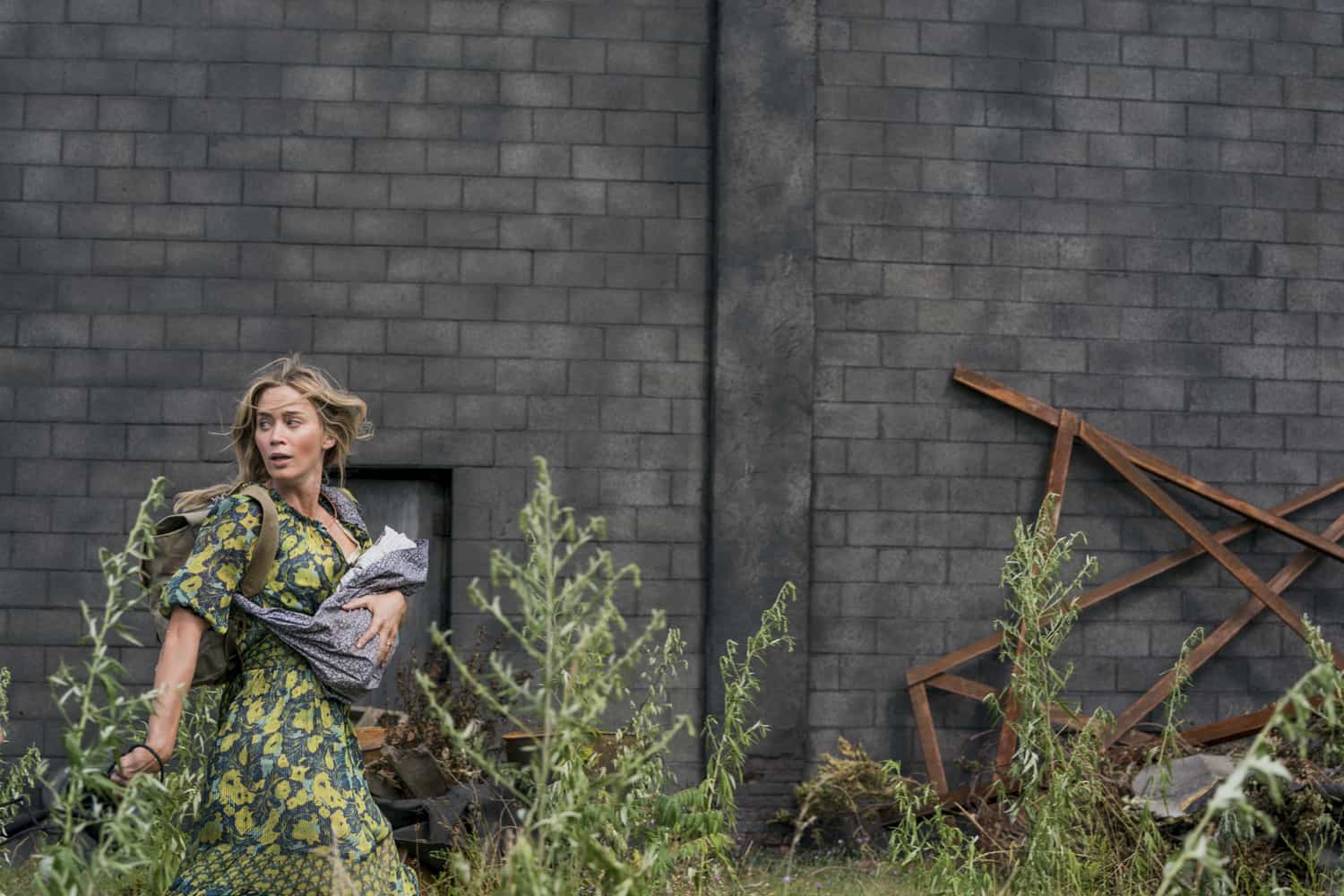
Emily Blunt in A QUIET PLACE PART II.
Using the music metaphor again, I’ll tell you that making shots for John is a lot like gigging with Chick Corea or Frank Zappa or anyone else known for helping their players find the edge of their abilities. Krasinski “wrote the arrangement,” and it’s complex and “hard to play,” but it can’t come across that way. It has to come across as effortless because nothing takes you out of a song faster than thinking, “oh, this sounds really hard to play.” You’re not hired to sight-read. You’re hired to make music. Wherever he’s leading you, you have to hear it and you have to be on your toes and respond to it. All of you are going to follow him on this journey, and sometimes you won’t know where you’re going until you get there because maybe the audience wants this thing and John wants us to give it to them on a take. If raising the degree of difficulty with some additional ask or idea might make the music 2% better, but carries an 80% chance of total embarrassment, John will take that risk every time. So, don’t try to lock him into anything. Take the journey with him and you’ll make some amazing discoveries along the way.
Of course, this is absolutely exhilarating on a movie set because you’re making shit up on the fly with a 50-foot Technocrane while the sun is going down and when it works, it’s euphoric. It’s the best thing in filmmaking. But it’s also scary because you don’t want to be the one who blows it on the kid’s best take and all of a sudden you’re out of light.
So you bring players who can improv. Each of them, in turn, brings their best jazz chops every day and, if John knows the chops are there, he’s going to put them to use to affect the audience in a way he didn’t even know was an option until he saw us do it—or almost do it. He’s on his toes, too, right? If he sees something, you’ll do one more take where “that thing that almost happened by accident… we’re gonna do that on purpose now.” He also knows what it’s like for each of us to be in the hot seat, which is to say he’s quick to show gratitude. “Thank you for fighting that out with me,” he’ll say when the band does him proud.
In that spirit, and given that one of the noblest missions of the SOC is to bring attention to the many unsung heroes who actually make an audience’s favorite shots happen, I’m going to devote the rest of this section to do exactly that.
Sean Devine, our dolly grip on AQP2, is one of my closest friends. I’ve made probably 20 movies with him, and for me, it’s the epitome of what the operator/dolly grip relationship should be. I’m extremely grateful that our key grip, Manny Duran, was so receptive to bringing Sean. Manny understood that Sean is my partner in every single shot and he moved Heaven and Earth to help us succeed. Sean and I feel the scene the same way. We’ve been “in the shit” 200 times together and Sean has never once wavered, lost focus, or abdicated his responsibility to the shot while “playing the bucket” or the “T-handle” or walking me off a Titan crane with the Steadicam. A whole chunk of my career is comprised of shots that we did together, and I hope what I’ve written about him makes it clear why the only organization in the film industry to honor the work of the dolly grip is the SOC. Operators know what dolly grips do for us because if they don’t do it, we get fired.
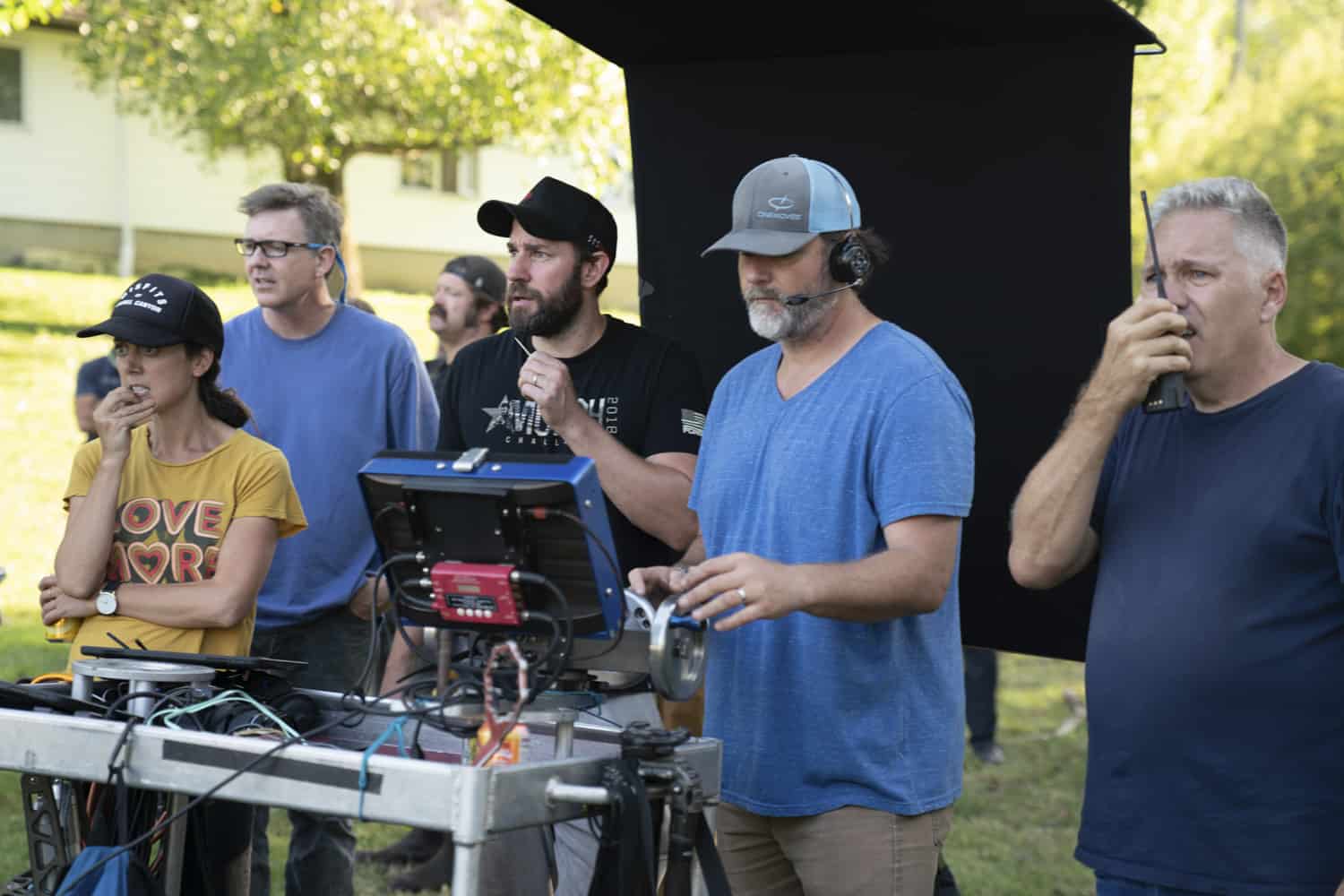
Matthew Moriarty, SOC, with director John Krasinski on the set of A QUIET PLACE PART II.
The person playing “the knob” was another bestie of 24 years, Steve Cueva. Stevie is basically my brother, having been my loader on a few movies and then taking over my spot with Zoran Veselic when I moved up. AQP2 was an absolutely brutal job for the focus puller, not only going back to film but doing so with the same expectation of being able to improv the shot as we do with digital. Stevie executed brilliantly, not just on the knob but in overseeing an entire department going back in time to do things like “check the gate” and “call the lab” and “change film stocks.” Stevie was the quiet hero of the entire shoot and Zoran would have been very proud of him.
Mike Buck was on the Technocrane “pickle.” I’ve known Mike for years as a tech and only recently as a crane operator, and Mike took to Technocrane jazz like a champ. There’s a beautiful sequence where Evelyn (played by Emily Blunt), on her way to get the oxygen bottles, stops and takes a moment of remembrance at the site of her youngest son’s death months before. She kneels at the cross and pulls off her wedding band, leaving it behind as a final goodbye to her husband. We did three takes of that in her direction, every take different, none of it rehearsed. Just some basic discussion between myself and John before we rolled and me calling the moves in the headset while we’re rolling and Sean and Mike and Stevie Cueva just making 24 good decisions a second on the 50-footer. Of course, Emily Blunt is one of the most graceful people you could ever photograph. She moves in a way that just simply belongs in a movie, in a way that tells an operator exactly what’s going to happen next. If she can see or sense what the camera is doing, she’ll do half the work for you and just effortlessly take you from point to point. So, this was one of the more forgiving Technocrane improvs. But still, you’ve got a big star on her knees crying while the sun’s going down and you don’t want to screw it up, so you bring people like Mike Buck.
I was also fortunate to have John Bonnin tech the Libra Head. The better the head works, the more time the band has to sweeten the music. There are heads that are newer and fancier than the Libra, and I love those instruments. But we were shooting film on 90% of the movie and my years of prior experience shooting film with John Bonnin had been so consistently good, so reliable—and, as anyone who knows John will tell you, so pleasant—that I did everything I could to hire John as a full-time bandmate. Polly was totally on board with it and she and I both know in our hearts that we got certain things with John that we wouldn’t have gotten without him. What better compliment can you pay to a head tech?
I can say the same thing for Dermott Treanor, our E-car driver. When the light was dying and we needed to make big crane shots with a tiny crane on a GripTrix, I could talk Dermott through a total wing-job and turn our 12-foot Miniscope into a bigger crane on 200 feet of track and he’d drive that thing around like a master dolly grip. Or he’d lead Emily Blunt in a dead sprint and stop on a dime on a headset cue, then take off again at the perfect speed. These are the shots you get with Dermott that you wouldn’t get with someone else. In his case, it’s etched very powerfully in my brain because there was a day we didn’t have Dermott driving and I ended up having to do a bunch of Don Juan sprinting with the Steadicam in ankle-busting, knee-high grass.
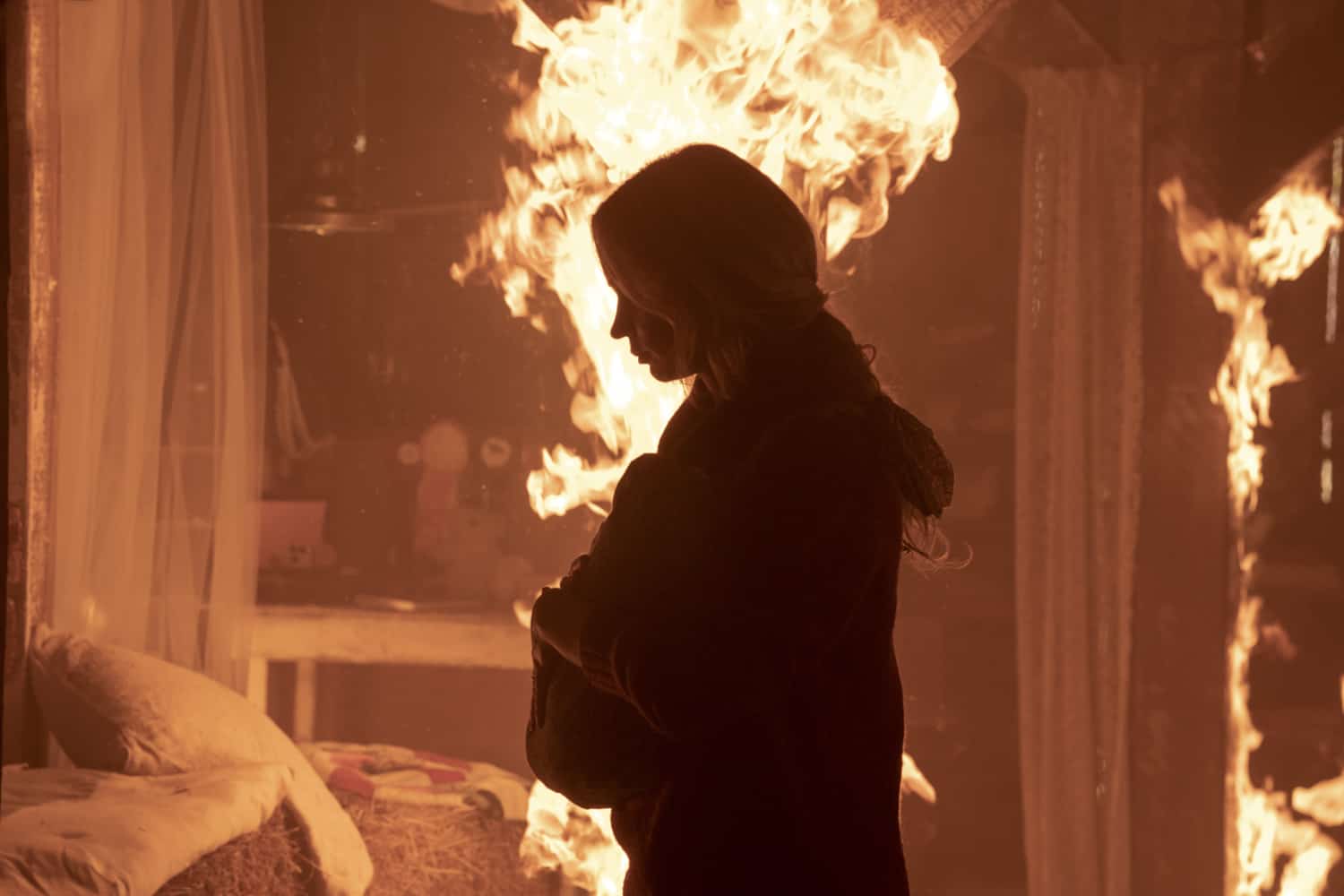
Emily Blunt in A QUIET PLACE PART II.
And let’s not forget the stars of the “Volvo shot,” Andreas Margreiter and Stefan Auer of the innovative Austrian motion control company CMOCOS. And Jeff Comfort and Ron Tatham of CineMoves, who executed the other half of the requirement with their ultralight remote head and motorized slider. Talk about “people being 90% of shotmaking”—the highly sophisticated CMOCOS arm is basically a robot in the shape of a huge gooseneck French flag arm. It does amazing things, but without Andreas and Stefan there, it’s a giant paperweight. They’re also filmmakers, which was huge for me in the prep. Nobody had ever attached a remote head to their arm and they were able to picture the shot in their heads, understand why I needed free, real-time pan and tilt and why it could never be entirely motion control, and then get back to me with a set of weight parameters Steve Cueva could use to outfit the camera—including the construction of the lightest 20mm lens Dan Sasaki ever built at Panavision. Not to mention their ability to take creative notes and translate them into ones and zeros, which was invaluable during the programming phase.
When it came time to execute that Volvo shot, we had Jeff Comfort crammed into the trunk of the Volvo with 200 pounds of CMOCOS controllers and batteries, simultaneously executing manual slider moves while triggering seven different CMOCOS cues with a second button. The choreography of it was a brain-breaker for Jeff [which you can see in detail in the SOC/AFI Lecture Series, Camera Operating, Class #9 in the SOC’s Content Portal]. Add to that the fact that he’s in a moving car, getting bounced around, sitting literally inches out of frame, surrounded by screaming actors, knowing that an actual Greyhound bus is about to bear down on him and spin him out backwards . . . when I think about what Jeff Comfort accomplished over the course of two weeks of prep and three perfectly-executed takes, it almost makes me weep. Everyone associated with that shot will tell you it depended entirely on Jeff. And he delivered it with a smile, taking on the extra job of triggering the CMOCOS cues, without complaint, like a total pro.
Two other Volvo shot stars I want to mention are the legendary stunt-driver Robert Nagle, who did all of Emily’s actual “driving” for her and who timed his Biscuit-rig moves down to the fraction of the second each and every take—and who kept my man Jeff and three other humans safe in a very dangerous situation throughout umpteen rehearsals and three actual takes. And my friend, First AD Dave Venghaus, who spent two months working out how to do the entire shot safely and upon whose shoulders a movie studio had placed the entire responsibility for doing so. Dave was, fittingly, my guest speaker in the AFI class, and I’m writing this from another movie I’m doing with him where, of course, he is again the lynchpin of achieving the work on a daily basis.
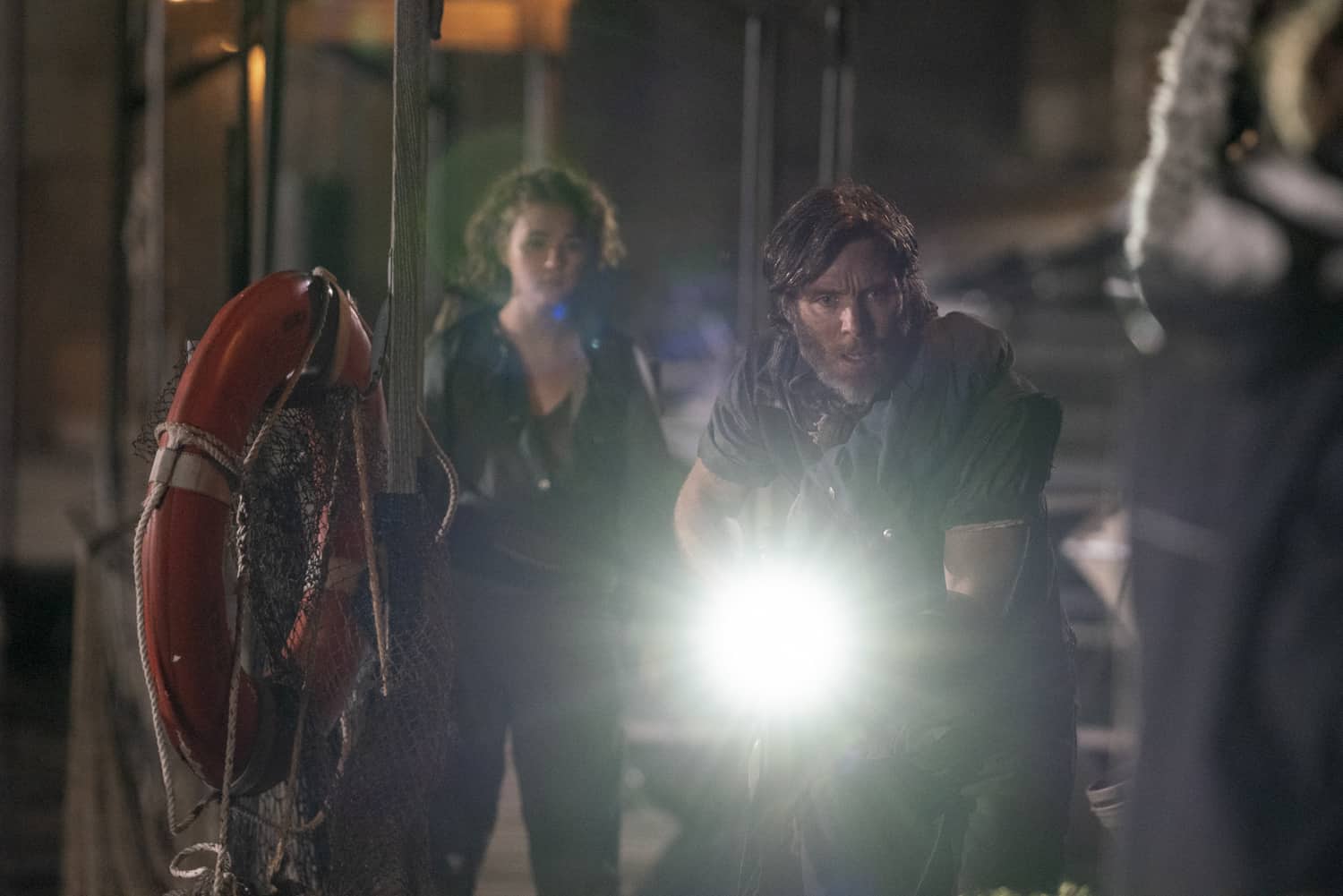
Millicent Simmonds as Regan and Cillian Murphy as Emmett in A QUIET PLACE PART II.
LESSON #2: Holding yourself to a visual philosophy will cause you to make a better movie.
I hope the script gets released at some point because it’s unlike any script I ever read in terms of how meticulously described the shots are. There is zero ambiguity as to how John saw the thing. Because of the success of the first movie, he had the luxury of being able to write a dense, technical script that may have underwhelmed your average studio exec in terms of readability, but made damned good and sure everyone knew precisely how he was going to spend the money. The script also confirmed my notion that this would indeed be the shoot where he would take the philosophy he’d been defining with the first movie and apply it with total conviction, freed of a lot of the constraints you face when you’re still in the proof-of-concept phase of building a studio franchise, where a lot more people are telling you “no.”
The philosophy is what allows you to answer questions like: Where must the audience be? Where can’t they be? When are you allowed to cut? When must you not cut? If the audience needs to go from “here” to “there,” can the characters take them every step of the way? It was so clear in the script we never really had to talk philosophy. The shots were the philosophy. It also didn’t hurt that after years of working with Don Burgess and upholding the Zemeckis school of storytelling with a camera, I basically shared the philosophy before we even started.
For example, who is the audience “with”? Wider lenses help the audience perceive the exact location of the camera and, by extension, where they are. The longer the lens, the less the audience knows where they are, they just know that they’re not in there with the characters. John’s basic starting point was that the audience would experience this world right along with the characters, which immediately helps them connect. I remember reading one of the reviews of the film after it came out and it contained the phrase “absolutely no distance between the audience and these characters.” It was music to my ears because it takes effort to shoot like that. You don’t just zap in on the 11:1 from wherever the dolly landed. You have to orchestrate it.
The long opening sequence that lays out “Day One” of the invasion is built entirely with shots that connect one family member to another. And this pattern doesn’t break when the action gets going, it actually strengthens. The “family” beat of the Volvo shot is seeing “Dad’s car” out the window, followed by the “terror” beat of the bus and the spinout. The very next cut is on Regan, who then—sprinting away from her father—brings the audience right back to her mom and siblings, crashed against a light pole with the bus just leaving the frame, only for her to be whisked to safety by her dad. The cut after that, you’re with Evelyn and her kids in the Volvo following the crash, but as Evelyn turns around, you reveal—in continuous time—Regan and her father running away outside the rear window. You see this family, struggling together in the same shot, even as they’re separated by circumstance.
We lived by these rules every day. Never cutting away to an action beat but rather making sure that the jeopardy and whoever was in jeopardy were somehow in the same shot. We also tried to do it in such a way that a highly mobile, highly active camera didn’t get noticed too much. Remember, nothing takes you out of a song quicker than the audience thinking “wow, that sounds hard to play.” You want the audience to just experience it, and that takes a lot of thought and a lot of time spent on the razor’s edge of “not enough” and “too much” and “yeah, that’s cool but how do we make it invisible?” This approach treats the audience like an interlocutor, not a target. They can unconsciously feel it when you’ve thought long and hard about how to treat them and, in my experience, they do reward you for it, one way or another.
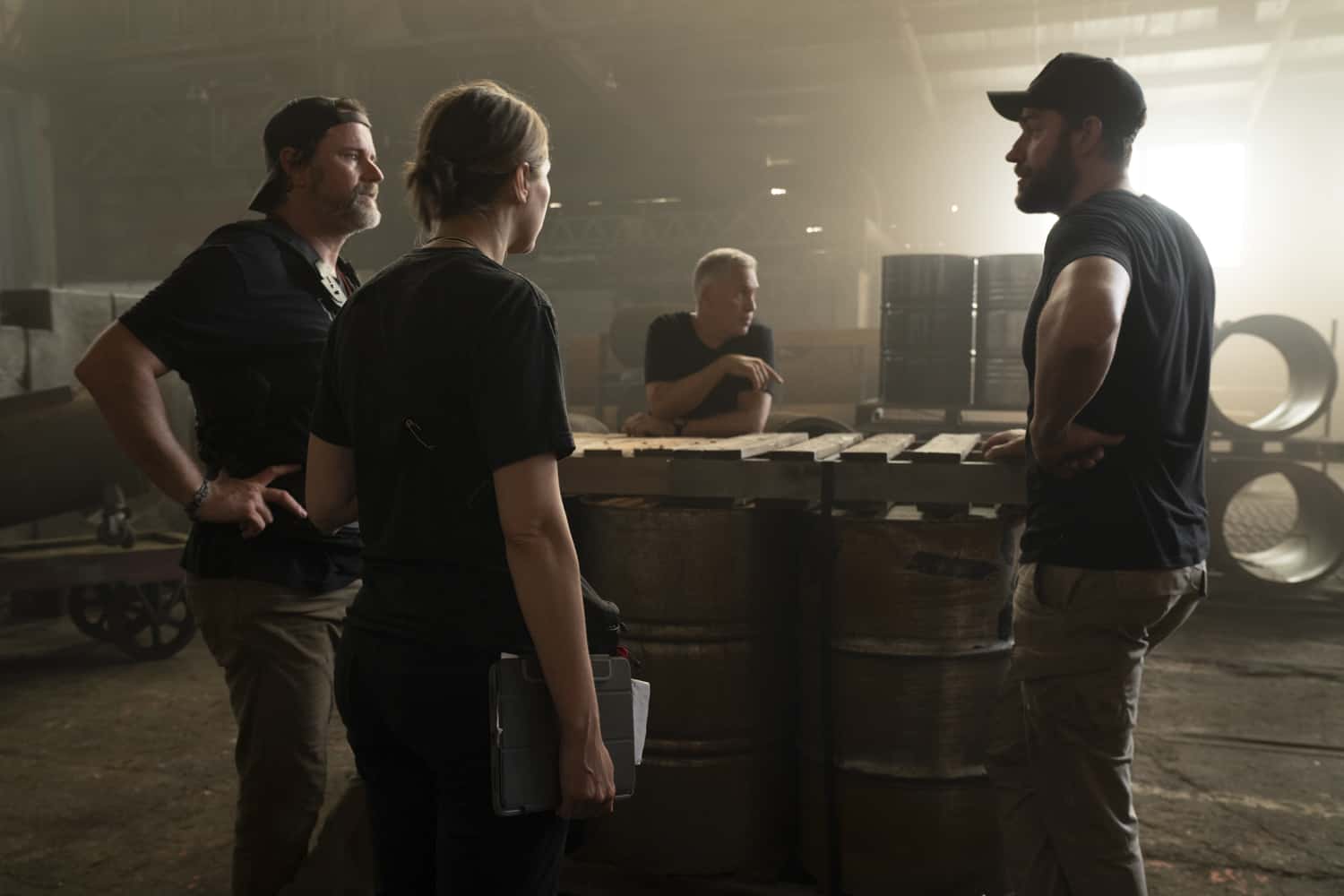
Matthew Moriarty, SOC, with director John Krasinski.
LESSON #3: On a movie with director-driven “shotmaking,” the operator/DP relationship must be one of give-and-take.
No matter what the director tells the operator, it cannot always be the case that “this is the shot and that’s that.” Lights have to go somewhere, right? Sometimes they need to hide behind a couch. Or they need to pound through a 20x silk right on the edge of the frame to wrap a certain way. Or they need to be above the header behind the actor’s head when he stands up. Directors who “make shots” are always a challenge for DPs. It can feel like a game of catch-up 13 hours a day just to get an exposure. Add the challenge of going back in time to shoot on celluloid and the fixtures get bigger, the footcandles go up and the DP’s job gets even harder.
So the operator must look, on every setup, for ways to help the DP do satisfying work. Every time you’re able, you give, knowing that on other setups, you will need to take in order to make the shot you were assigned. That said, DPs must know that an operator who is in the director’s good graces is in a much better position to sell a modified shot that will achieve the lighting goals than an operator who’s in the director’s doghouse. Which is another way of saying…
No matter what the DP says, it cannot always be the case that “this is the lighting, fit the shot into that.” First, a strong, shotmaking director simply won’t stand for it. Second, it violates the concept of give-and-take. But what operators must know is that a DP who has witnessed an operator doing a whole bunch of difficult stuff while still trying to help facilitate good lighting is much likelier to give with a smile than a DP whose operator hid behind “what the boss said” and refused to help, shot after shot.
Like I said, it’s a partnership based on give-and-take. And that was what I enjoyed most about working with Polly Morgan. Here we both were, each of us doing very challenging things on a daily basis, having started the movie as total strangers, yet still managing to work out ways to help each other, one shot at a time. Her work was brilliant, especially with a camera that’s always moving, doing something different on every take, and she just danced with it like a tiny Muhammad Ali—light on her feet, ever resilient. I have so much respect for Polly and how she navigated the shoot with all its variables and challenges, including the little-known fact that the entire time we were making the movie, she was the mother of a newborn baby. I just now remembered that and my mind is blown all over again.
Camera Operator Spring 2022
Above Photo: Emily Blunt as Evelyn and Noah Jupe as Marcus in A QUIET PLACE PART II.
Photos by Jonny Cournoyer
TECH ON SET
50-foot Technocrane
Titan Crane
Libra Head
GripTrix
12-foot Miniscope
CMOCOS Motion Control System
CineMoves Remote Head & Motorized Slider
Panavision 20mm Lens
RELATED CONTENT
Watch the trailer for A QUIET PLACE PART II
Matthew Moriarty, SOC
Learn more about Matthew’s career and projects at IMDB.com
Membership Content Portal:
SOC Lecture Series, Camera Operating, in Partnership with AFI
Matthew Moriarty, SOC, and guest David Venghaus for Class #9, The Work of the Operator: Concept and/or “Big” Shots, Part II
BEHIND THE SCENES
Select Photo for Slideshow
Matthew Moriarty, SOC
Matthew Moriarty, SOC, had his first movie job at the age of eleven. In his 25 years as a member of Local 600, Matthew has racked up nearly 80 feature film and TV credits. He was nominated for a SOC Camera Operator of the Year Award in 2018 for his work on Jason Reitman’s film, The Front Runner. Matthew lives in the wine country of Oregon with his wife, Ingrid, and their girls, Ella and Sydney. When he’s not at work, Matthew is a private pilot, a farmer, a winemaker, a jazz drummer, a passionate political activist, and a very mediocre piano player.
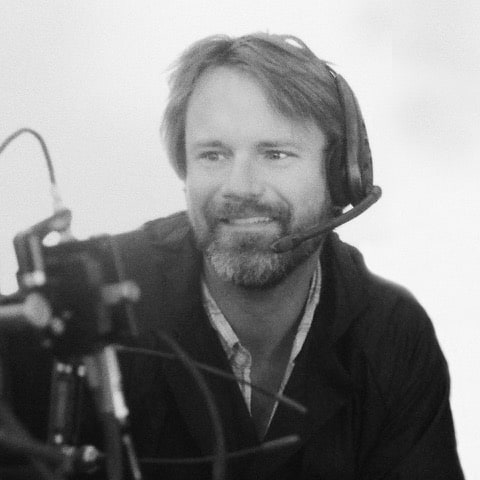
SPECIAL THANKS TO OUR ADVERTISERS
